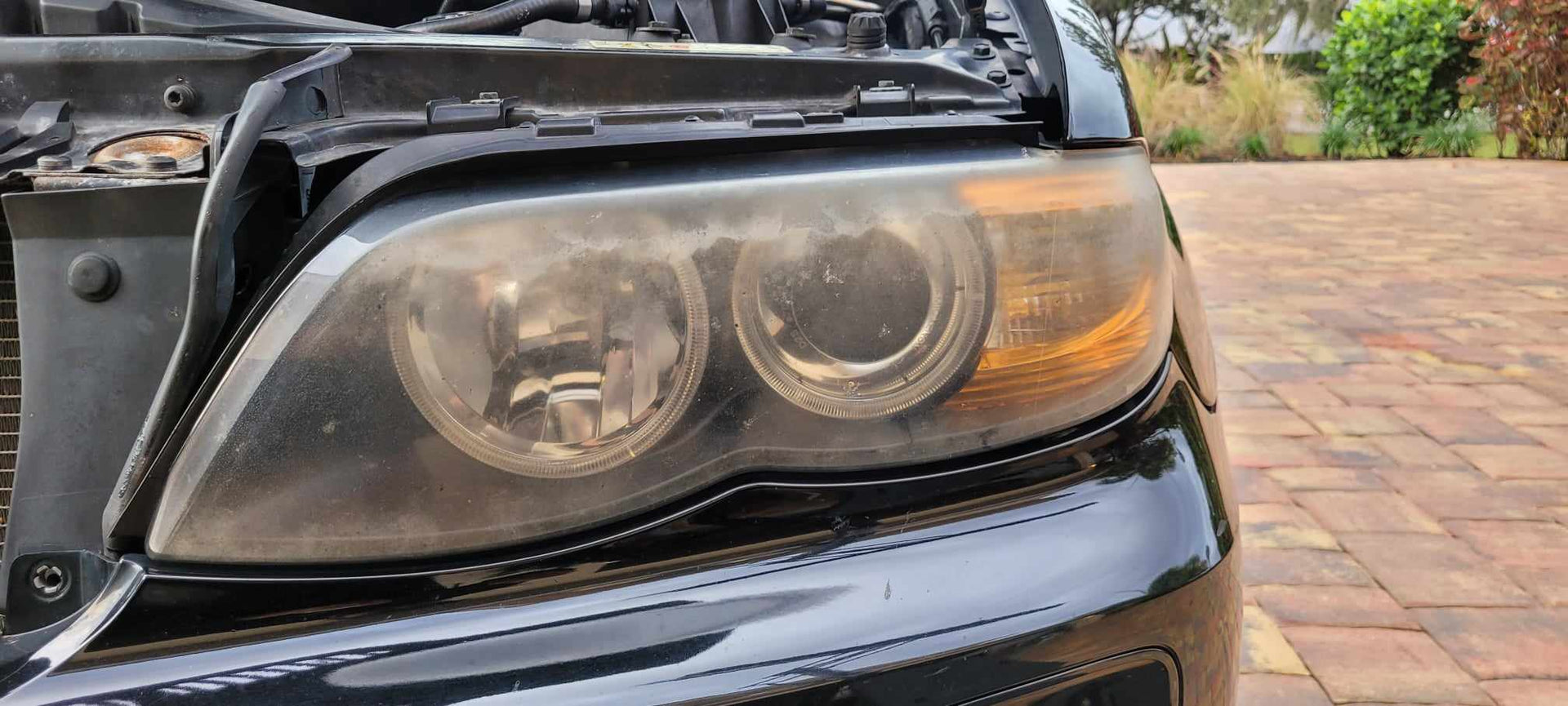
Headlight Issues
Find Out The Different Types Of Issues You Might Be Having With Your Headlights
-
Headlight Issues
View KitDid you know there are 5 different issues you can be experiencing with your headlights? Its imporant to understand these issues, since not all headlight restoration processes are the same. Below you will find some in depth information on each issue, so you are well prepared. You got this, and we got you!
-
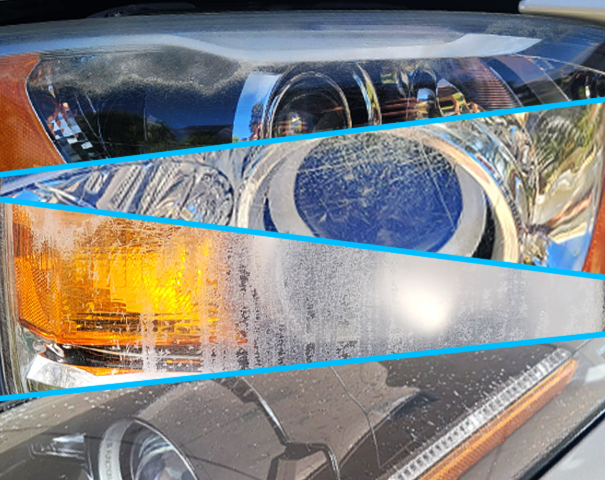
What is a proper Restoration?
Before we dive into the issues, lets talk about what a proper restoration is. To restore your headlights, 2 things need to be accomplished. First things first, you must get to the raw headlight lens itself. Think of a headlight in layers. You have the headlight itself, the old clear coat layer, which was applied at the factory, then the oxidation layer on top. You must remove all these layers and imperfections to get to the bare headlight. This is best done by wetsanding since it can potentially remove any scratches, or chips from road debris as well. Once you have wetsanded to the bare headlight lens, you’re ready for the second step,the restoration process.
Issues
-
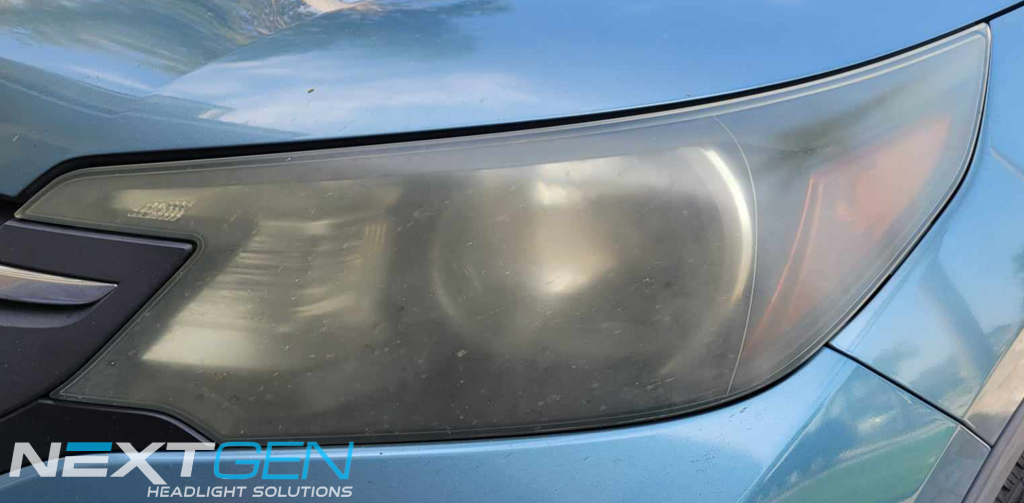
Basic Oxidation
Regular oxidation on the headlight is not only the most common issue, but also the easiest to restore. Since these headlights have a thin layer of oxidation, wetsanding to the bare headlight can take as little as 5 minutes per headlight depending on the size.
Starting Grit: 600 Ending Grit:600
-
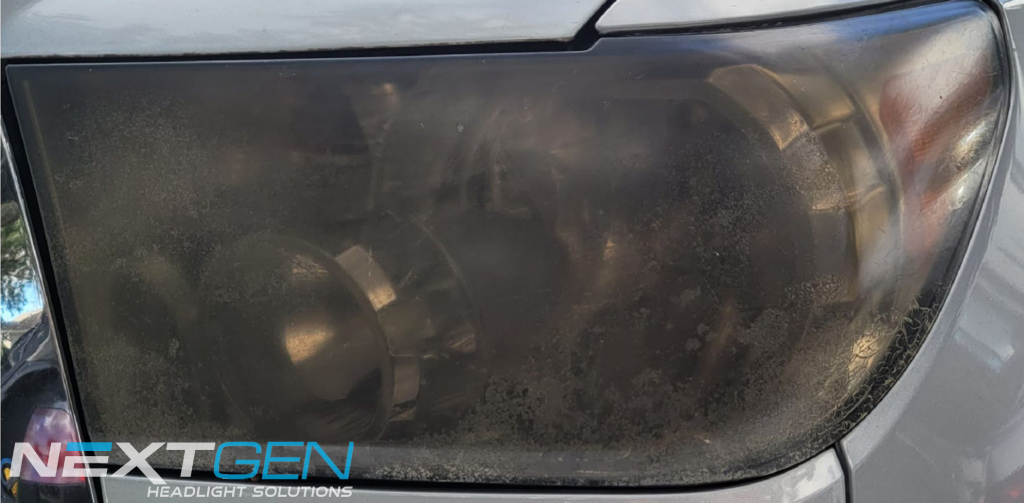
Severe Oxidation
Severe oxidation is like regular oxidation, only its penetrated deeper into into the headlight. These types of headlights can be a little more time consuming to get to the bare headlight, which is why in some cases its best to start with a 400 grit, or even a 320, then finish with the 600 grit.
Starting Grit: 320 Middle Grit: 400 Ending Grit: 600
-
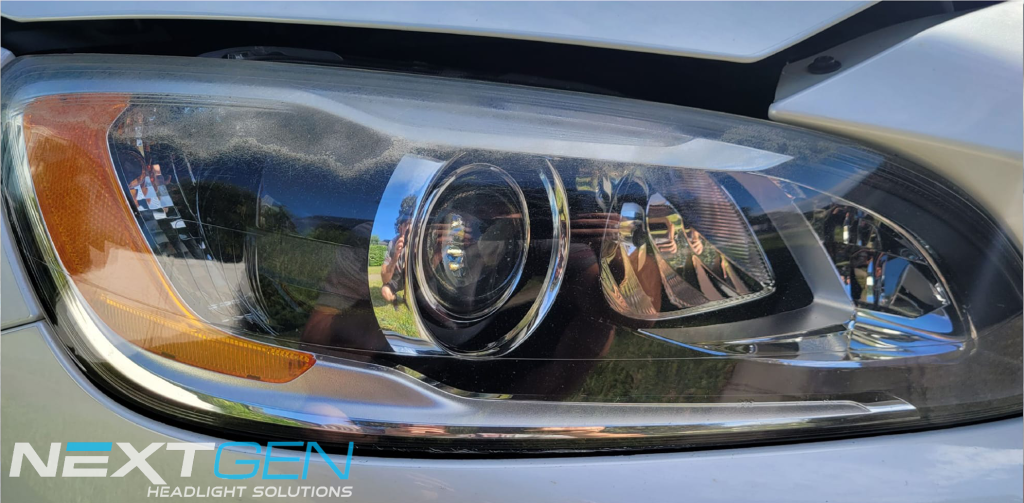
Intact Clear Coat
The most tedious and time consuming issue, is removing intact clear coat. In most cases, when a headlight begins to oxidize, its starts at the top, since thats where the majority of the UV rays from the sun hits. This means the top of the headlight can be oxidized, while the bottom half can still appear to be clear and in good condition. As stated above, you must remove the oxidationandfactory clear coat to get to the bare headlight to properly restore. Removing the old clear coat can be time consuming, but once your break into it, it becomes easier.
Starting Grit: 320 Middle Grit: 400 Ending Grit:600
-
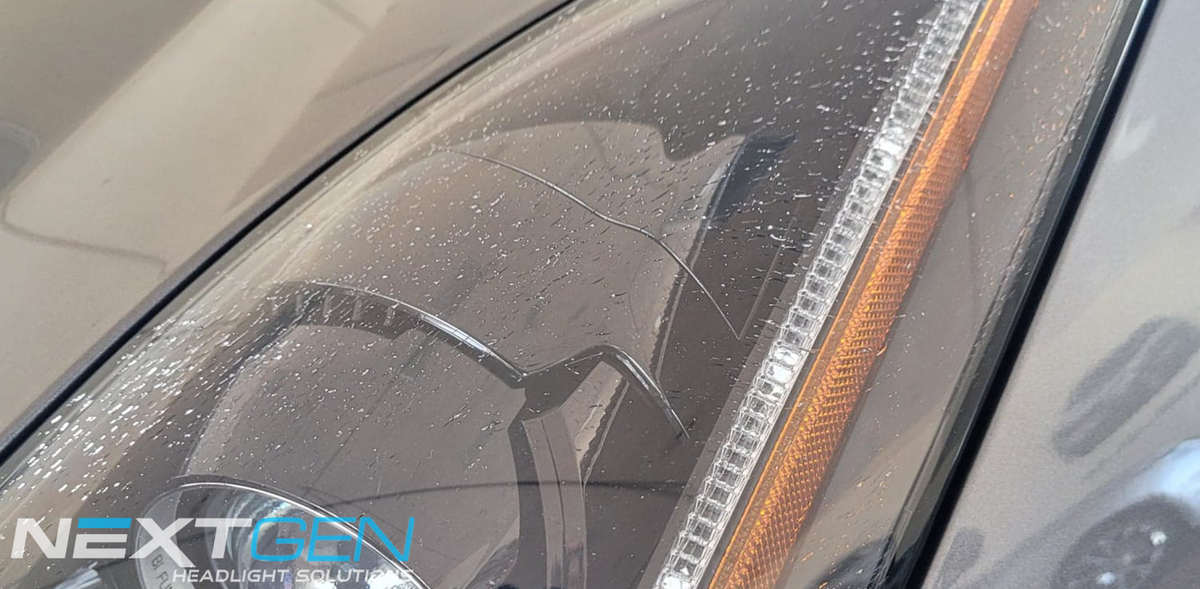
Microcracking
Microcracking occurs when the Polycarbonate (The material the headlight is made out of) begins to form tiny cracks due to constant temperature changes. These cracks can either be on the suface, the middle pane of the lens, or close to the inside pane. While surface microcracks can be removed, cracks in the middle or deeper in the lens can’t. Oxidation on the headlight can still be restored and improve vision, but these little cracks may still be present.
Not Restorable
-
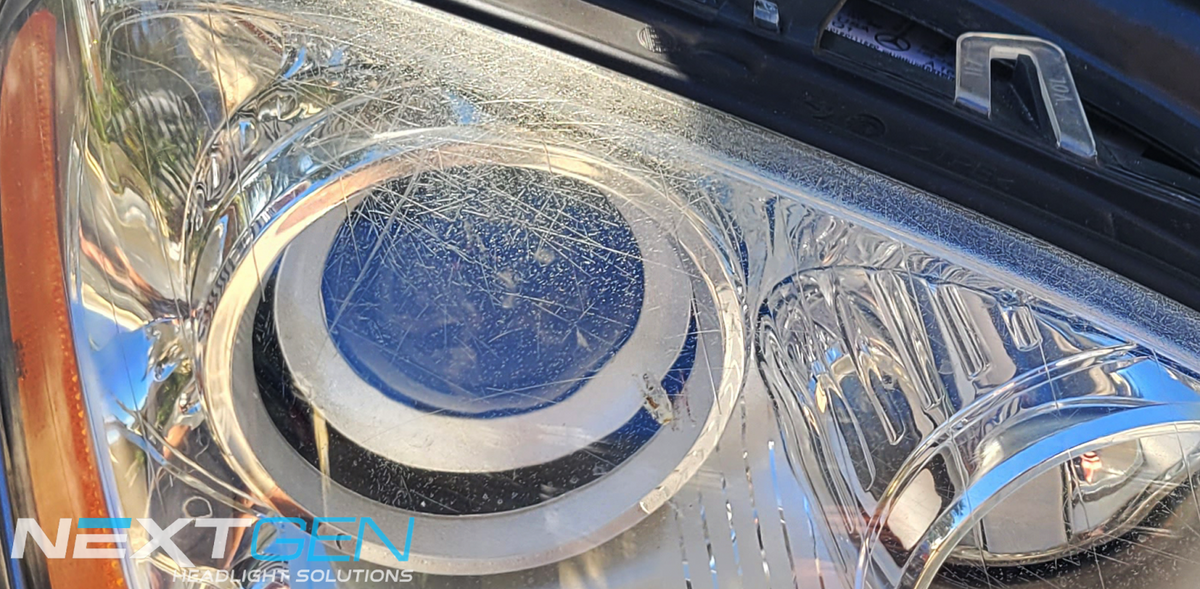
Scratches
Scratches in the headlight are fairly common. Its ok to assume that the very front portion of any vehicle is going to get some road debri or other things directly hitting the headlight. Scratches can come from a few different sources. From Car washes, to physically hitting something, and in some cases, results of factory clear coat beginning to deteriorate. Depending on how deep the scratches penetrate, they can still be removed by sanding.
Starting Grit: 400 Ending Grit:600
-
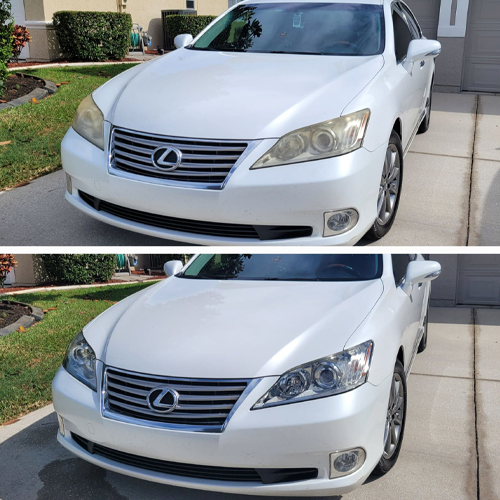
-
Now, Lets get to restoring your headlights.
Being in the business, we’ve heard it all. “Why use a kit when I can just use Bug Spray or WD-40??” We get these responses more often than we’d like, but its builds value. How does it build value you may ask? Because those who go this route end up hiring a headlight restoration service or buying a kit in the long run. These “Hacks” are exactly that, hacks. They don’t protect your headlight from UV Rays, remove scratches or chips from road debri, and can even permanenetly damage your headlight. This is why Wetsanding is the best method of getting down to the bare headlight. The use of water as a lubricant helps carry away debris and keeps the sandpaper clean, ensuring a smoother and more even finish. Additionally, wetsanding reduces heat buildup, which can prevent the lens surface from getting damaged, distorted or warped.
-
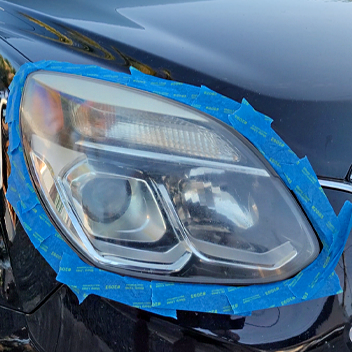
Step 1Mask off & Westsand the headlight
Start by Masking off the headlight to protect from any sanding accidents. Wetsanding the headlight in vertical or horizontal motions with medium pressure. Keep in mind,each headlight is different, therefore some can be more time consuming than others. Wetsand with the 600 grit sandpaper while spraying the headlight with water. This will carry away debris and keeps the sandpaper clean. It will also ensure a smoother and more even finish. Your goal here is to removeALLoxidation, old clear coat, andget to the bare headlight.A bare headlight will apear dull and milky. If you have headlights that are severely oxidized, you may need to use a more course sand paper.
-
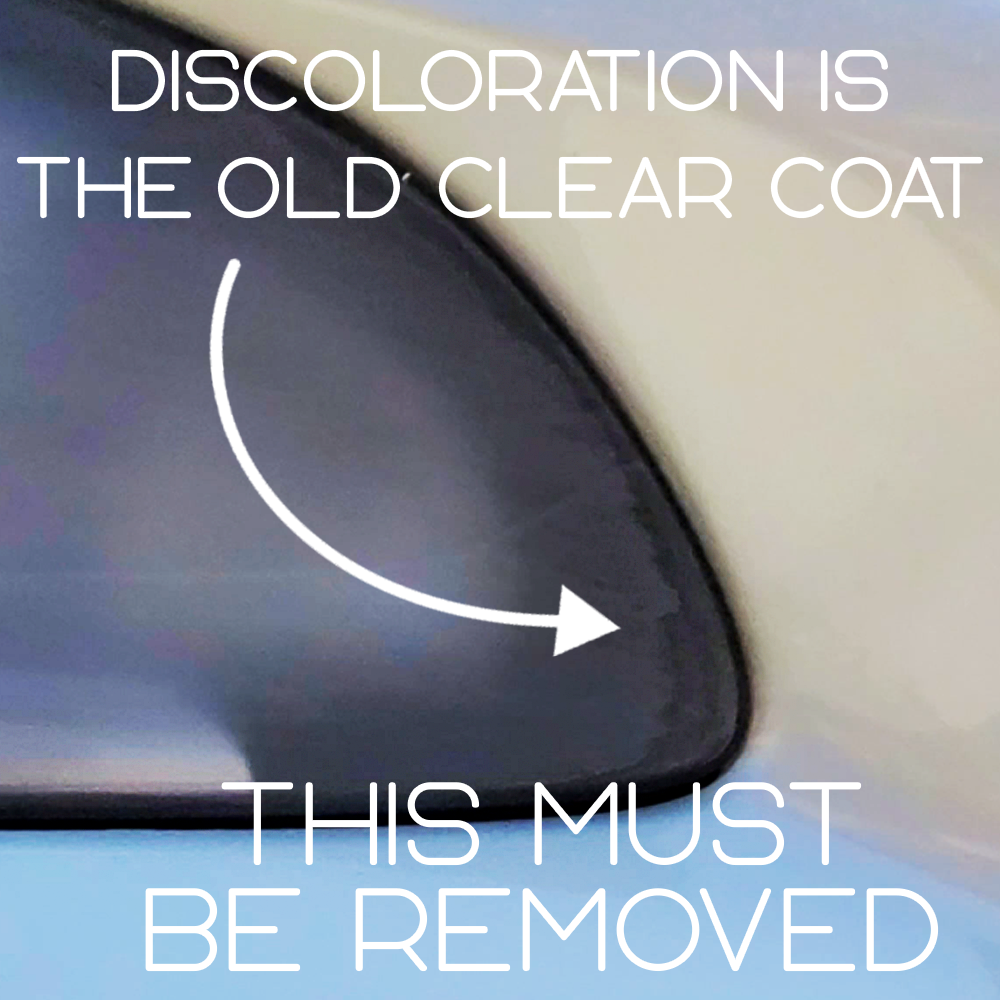
Step 2 Dry, inspect & Clean the headlight
Thoroughly dry the headlight with the lint free towel, andinspectthe lens for any missed spots, or clear coat thats still on the lens. These spots will appear darker on the lens.If you do not remove all of this, it may be visible after applying the clear coat!The headlight lens should be completely dull, smooth andmilky. Remove your masking tape and reapply. This will remove any trapped water in the tape, and prevent any droplets hitting the wet lens after removal. Once it passes inspection, alcohol wipe the lens. This will remove any oils, or contaminents from the headlight.
-
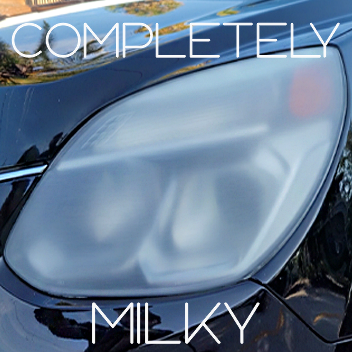
Step 3 Applying clear coat
Be sure the can is atroom temperature, andshake the can for atleast 2-3 minutes. This will build the pressure in the can, and mix the properties inside as well. Shaking the can will prevent the spray from sputtering when applying. Once you are ready to spray, do a test spurt to clear the nozzle, and prevent any spitting. Spray the clear coat4 inchesfrom the lens, holding the nozzle the whole time, stroking from one side of the headlight to the other. If the can is spurting, shake the can between strokes. Be sure to move with the contour of the lens. Inspect then lens once complete for any texturing. Touch up with clear coat on any missed spots. Flashoff or fogginess may be present immediatly after spraying. Allow headlight to dry and it will dissipate. To remove any overspray, immediately rub area with alcohol pad.










